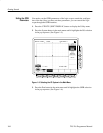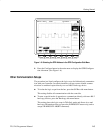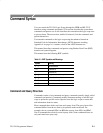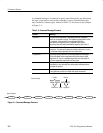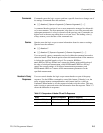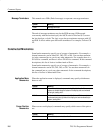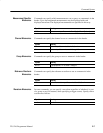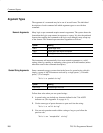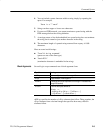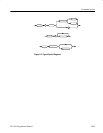
Command Syntax
TLS 216 Programmer Manual
2–5
3. Never precede a star (*) command with a colon:
ACQuire:MODe ENVelope;*TRG
Any commands that follow will be processed as if the star command was not
there so
ACQuire:MODe ENVelope;*TRG;NUMAVg 10
will set the acquisition mode to envelope and set the number of acquisitions
for averaging to 10.
4. When you concatenate queries, the instrument concatenates all the responses
into a single response message. For example, if the display intensity for text
is 80% and for the waveform it is 90%, the concatenated query
DISplay:INTENsity:TEXt?;WAVEform?
will return either :DISPLAY:INTENSITY:TEXT 80;:DISPLAY:INTENSIĆ
TY:WAVEFORM 90 if header is on or 80;90 if header is off.
5. You may concatenate set commands and queries in the same message. For
example,
ACQuire:MODe NORMal;NUMAVg?;STATE?
is a valid message that sets the acquisition mode to normal, then queries the
number of acquisitions for averaging, and the acquisition state. The
instrument executes concatenated commands and queries in the order
received.
Here are some invalid concatenations:
H DISPlay:INTENsity:TEXt 80;ACQuire:NUMAVg 10
(no colon before ACQuire)
H DISPlay:INTENsity:TEXt 80;:WAVEform 90
(extra colon before WAVEform — could use DISPlay:INTENsity:
WAVEform instead)
H DISPlay:INTENsity:TEXt 80;:*TRG
(colon before a star (*) command)
H APPMenu:LABel:BOTTOM1 "foo";LABel:BOTTOM2 "fee"
(levels of the mnemonics are different — either remove the second use of
LABel: or place :APPMenu: in front of LABel:BOTTOM2)



